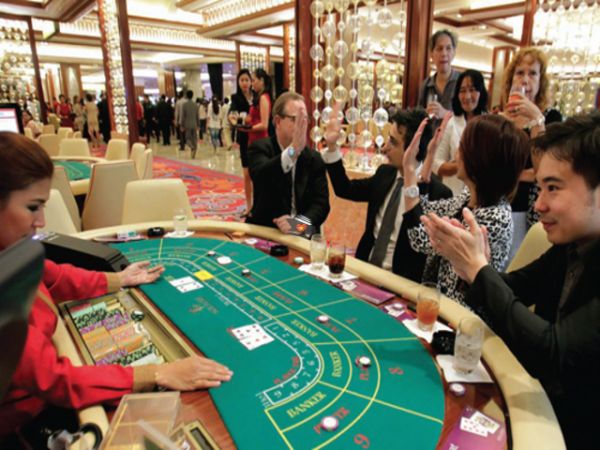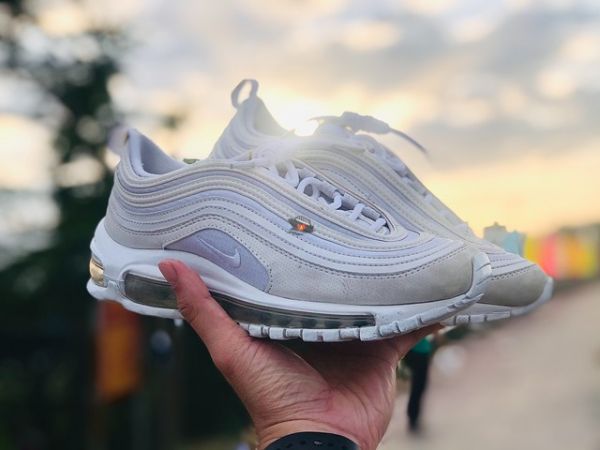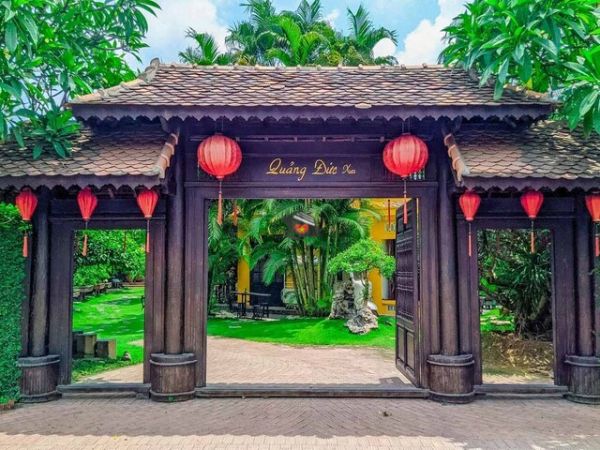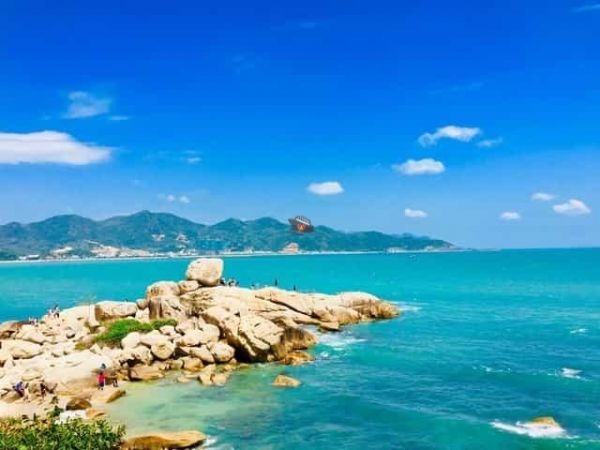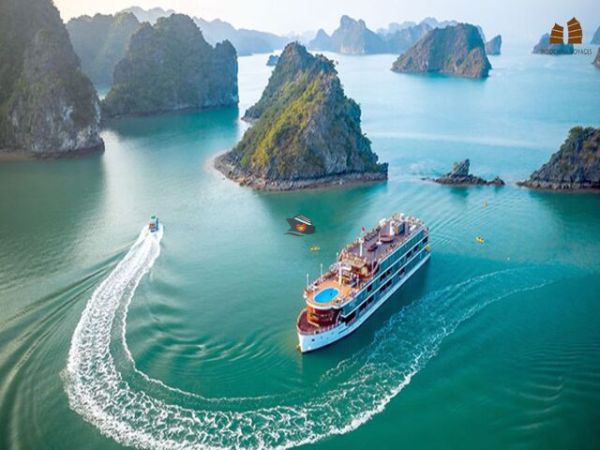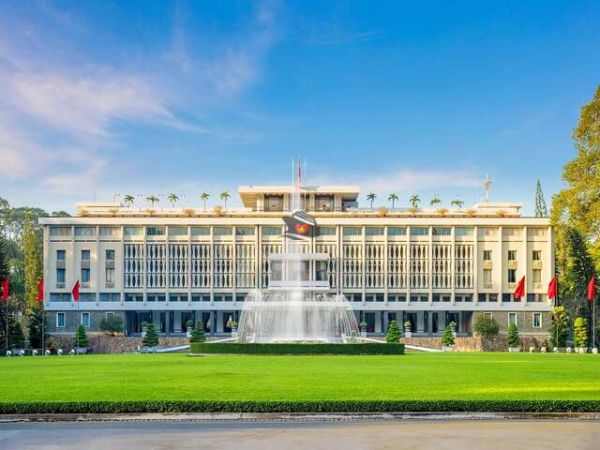HUE VIETNAM

Hue Vietnam. Former imperial capital Hue, Vietnam, offers tourists an immersive experience of the country's rich history without feeling like they've traveled back in time. It is known for its world-famous historical treasures, unique cultural features, and delicious traditional food.
Hue can be your long-awaited haven if you have a strong interest in Vietnamese culture or if you're just seeking a break from the bright lights and gridlock of big cities. The ancient royal city enchants travelers with beautiful landscapes, a serene environment, religious traditions, hundreds-year-old historic architecture, and key highlights of UNESCO-recognized tangible and intangible cultural heritages—all despite Southeast Asia's fast urbanization. You can get all the information you require to organize your trip to Hue, Vietnam, from this post.
>> Explore related tours: Chan May Shore Excursions - Gateway to Central Vietnam's UNESCO Heritage Sites
Hue Location In Vietnam:
Hue City is the capital of Thua Thien Hue, a coastal province in central Vietnam that borders Laos to the west, the East Sea to the east, Quang Tri Province to the north, Quang Nam Province, and Da Nang to the south. The province boasts a 128-kilometer coastline, an 80-kilometer Perfume River, and more than 200,000 hectares of woodland. Being one of the most important provinces in the center, Thua Thien Hue has easy access to the trans-Vietnam rail, Phu Bai International Airport, Thuan An Port, and Highway 1A.
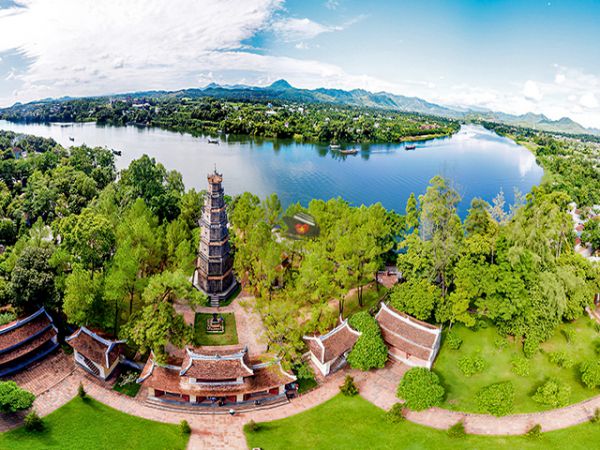
The History Of Hue Vietnam:
Before the Vietnamese conquest, Hue was part of a prefecture under the Champa Kingdom. When the nine Nguyen lords of the Inner Realm (Central and Southern Vietnam) reigned over Hue, Vietnam, from 1687 until 1775, the city began its lengthy history as the capital of a feudal system. Hue was then taken over by the Tay Son brothers, and it served as the nation's capital from 1788 until 1801. Following the collapse of the Tay Son Dynasty, Emperor Gia Long (Nguyen Anh), a descendant of the Nguyen lords, retook Hue Imperial capital and consolidated the Vietnamese monarchy. This established the groundwork for the thirteen Nguyen emperors, who ruled Vietnam from 1802 until 1945.
Hue continued to be the Imperial Palace of the French protectorate (Annam) over Central Vietnam throughout the 1880s. For this reason, Hue's fascinating architecture has significant French influences. Hue's regal renown finally came to an end in 1945 with the abdication of Bao Dai, the last Nguyen King.
Due to its proximity to the border separating the South and the North, Hue suffered significant damage during the Vietnam War, particularly during the "Battle of Hue," which was a part of the Tết Offensive in 1968. Subsequently, the old capital underwent extensive restoration and renovation to preserve its priceless historical artifacts.
Hue was the birthplace of imperial authority and nationalist movements for five centuries, during which time it saw the glory of Vietnamese feudalism and the agony of their people in bloody battles. Hue continues to be an important hub for tourism, education, and religion in central Vietnam today.
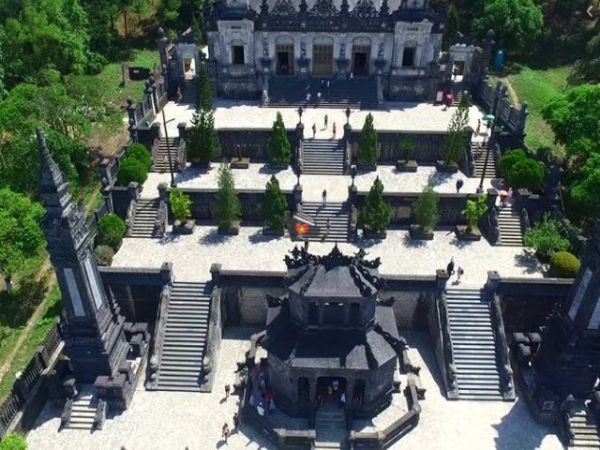
>> Book your tour now: Vietnam Shore Excursions 2025 - Discover the S-Shaped Country from Cruise Ships
The Best Time To Visit Hue Vietnam:
Hue has four distinct seasons in its tropical monsoon climate: spring, summer, autumn, and winter. You may arrange your journey taking into account the features of each season.
From mid-January through April: Springtime temperatures typically range from 22 to 25 degrees Celsius.
Every year, between the Lunar New Year (January or February) and the Hue Festival (April), a major cultural occasion held every two years to highlight the city's historical and traditional qualities, Hue welcomes a growing number of tourists.
From May to August: Hue City has midsummer temperatures averaging between 30°C and 38°C. Visits to temples, museums, and traditional markets are good indoor activities during the dry season with heavy humidity.
Mid-August to mid-September: The temperature drops to about 18 and 20 degrees Celsius, and autumnal showers begin. For those who wish to escape the crowds during peak seasons, this wet season is ideal.
October through December: At the end of the year, there are usually a lot of floods and rains. It's not the ideal time to visit Hue during this flood season.
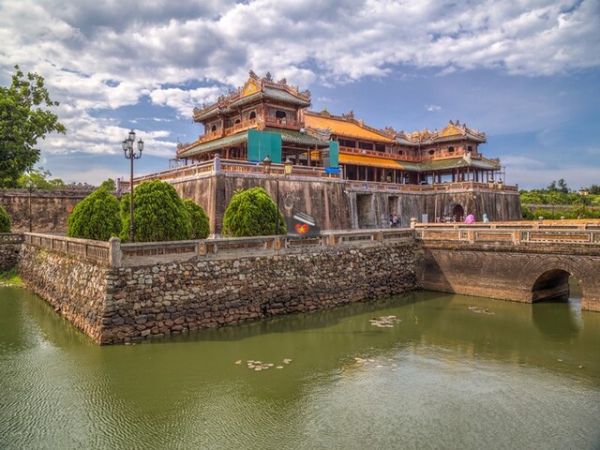
How To Get To Hue Vietnam:
Since Hue has an accessible location in the center of Vietnam, it is easy to travel to Hue from Ho Chi Minh City (1100 kilometers to the south), Hanoi (700 kilometers to the north), or the nearby Da Nang City (about 100 kilometers away) by the following means of transportation:
Airplane: There are regular domestic flights from Ho Chi Minh City or Hanoi to Hue’s Phu Bai Airport (HUI). Then, you can catch a taxi from Phu Bai Airport to reach the Hue City center (about 15 kilometers away).
Train: Hue is an express stop on the main north-south railway line that connects Hanoi and Ho Chi Minh City. It would be an unforgettable journey to Hue when you pass the spectacular scenery on overnight trains with air-conditioned compartments, soft seats, and comfortable sleeping beds at reasonable prices.
Bus: A tour bus is the longest but cheapest way to get to Hue from Da Nang (2.5 hours), Hanoi (13 hours), or Ho Chi Minh City (25 hours). Buses will arrive at the two hub bus stations of Hue City: the Northern Bus Station and the Southern Bus Station. You can make online bookings through private agents in the town.
Car/motorbike: From Da Nang City, you can take a 3-hour ride to Hue by following the coastal road of National Highway 1, which passes through the scenic Hai Van Pass (Hai Van Quan).

Hotline/ WhatsApp: +847-6666-0606
Email: info@friendlytravel.vn


